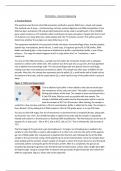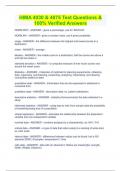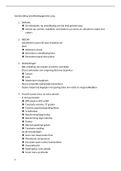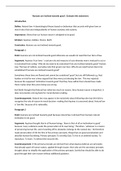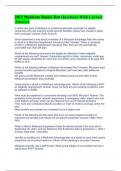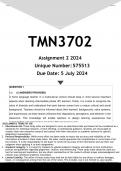Essay
Unit 11 Aim D: Genetic Engineering Assignment (DISTINCTION)
- Institution
- PEARSON (PEARSON)
This is my distinction grade assignment for unit 11 aim D on genetic engineering and its applications in industry and medicine. All criteria were met and I was awarded distinction. If you have any questions or concerns, please do not hesitate to get in touch. I hope you find my assignment h...
[Show more]
